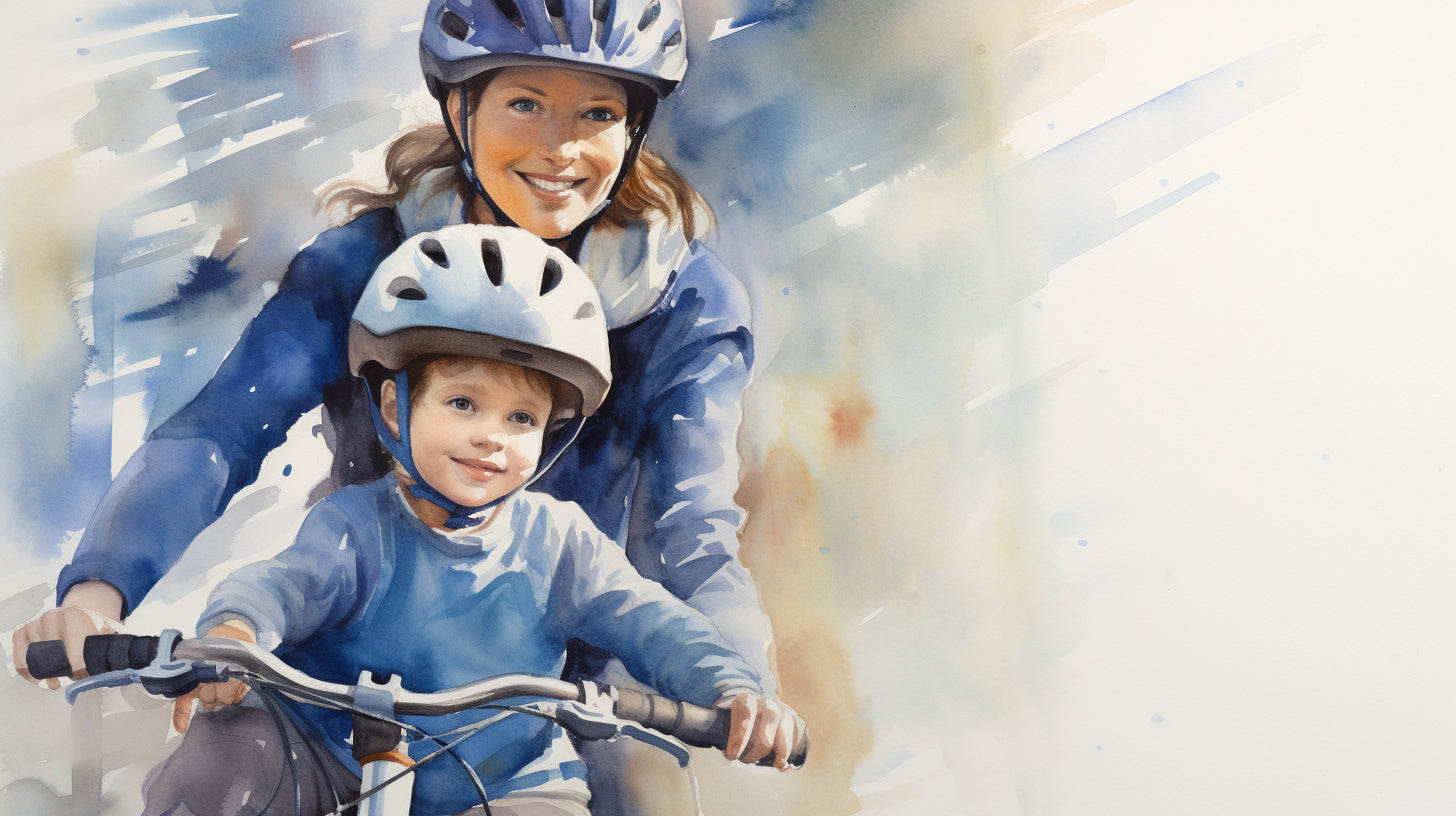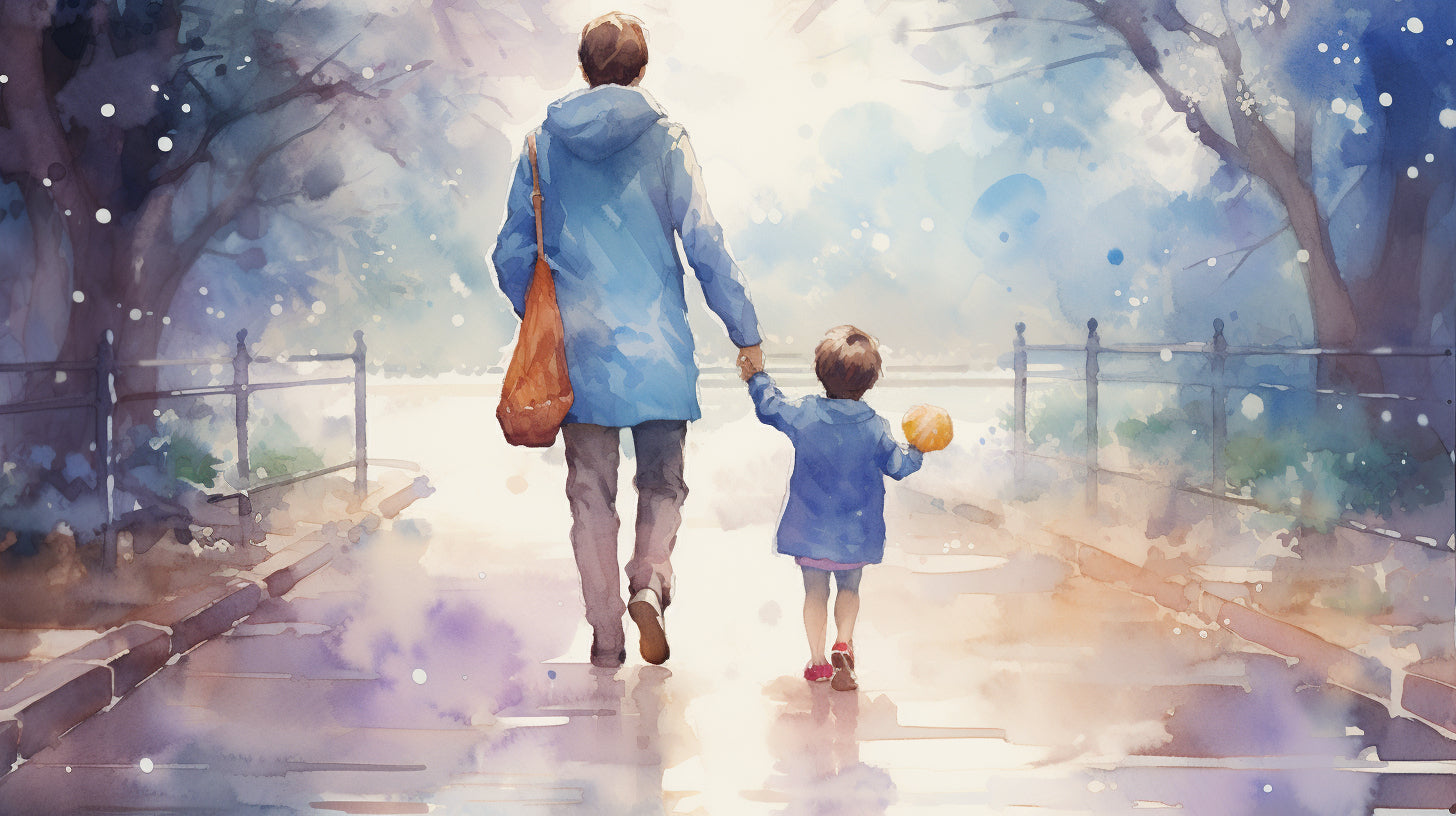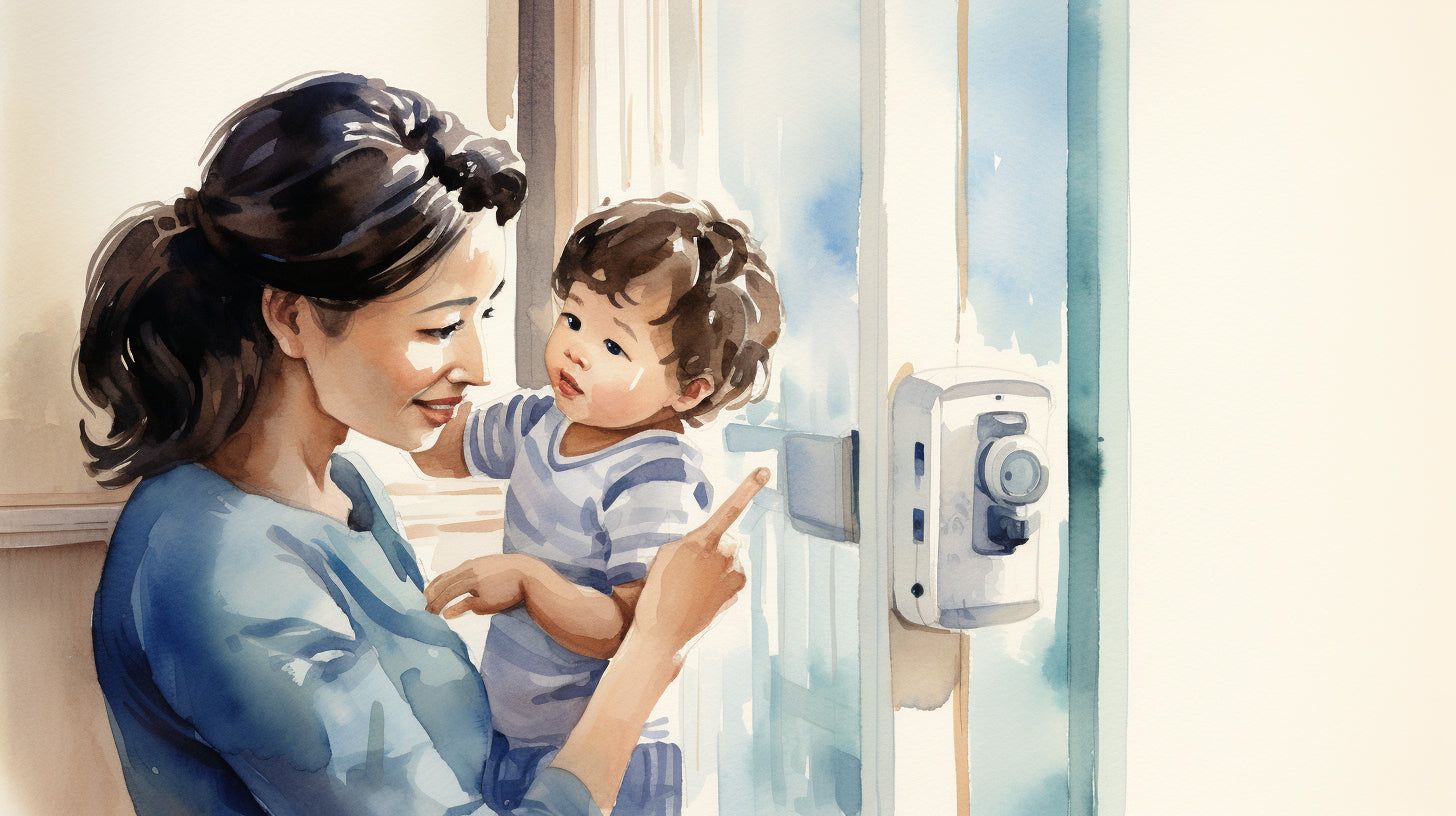Welcome to this article on outdoor safety tips for stay-at-home moms! As a mom, you understand the importance of keeping your family safe, especially when it comes to outdoor activities. Whether you're heading out to the park, going on a hike, or just playing in your backyard, it's crucial to prioritize safety for both you and your little ones.
In this article, we will cover various aspects of outdoor safety that every stay-at-home mom should know. From planning your outdoor activities to childproofing the outdoors, from sun protection to bug and insect safety, from water safety to emergency preparedness, and even stranger danger and supervision tips - we have got you covered!
Outdoor adventures can be a great way to bond with your family and enjoy nature. By following these safety tips, you can have peace of mind knowing that you have taken the necessary precautions to keep your family safe while having fun outdoors. So, let's dive in and start exploring the world of outdoor safety for stay-at-home moms!
Planning Outdoor Activities
When it comes to planning outdoor activities with your family, there are a few key things to keep in mind to ensure everyone's safety. Whether you're going for a hike, a bike ride, or a picnic in the park, taking a proactive approach to planning can help prevent accidents and emergencies. Here are some tips to help you plan outdoor activities safely:
Researching Locations and Routes
Before heading out for your adventure, it's important to research the location and the route you'll be taking. This will help you become familiar with the area and any potential hazards you should be aware of. Here are a few things to consider when researching your outdoor destination:
- Trail difficulty: If you're going for a hike, determine the difficulty level of the trail. Make sure it's appropriate for everyone in your family, especially if you have young children or elderly family members.
- Terrain: Take note of the terrain you'll encounter on your outdoor adventure. If there are steep or slippery slopes, you may need to plan accordingly and ensure that everyone has appropriate footwear.
- Reviews and recommendations: Read reviews and recommendations from others who have visited the location. This can give you insight into any potential safety concerns or issues you may encounter.
Checking Weather Conditions
Checking the weather conditions before heading out is crucial for outdoor safety. Inclement weather can pose risks such as storms, extreme temperatures, or high winds. Here's what you should do:
- Check the forecast: Look up the weather forecast for the day of your outdoor activity. If there's a chance of severe weather, it may be best to reschedule your plans.
- Dress appropriately: Dress yourself and your family members in layers to accommodate changing weather conditions. Bring rain gear or sun protection as needed.
- Stay hydrated: Remember to bring plenty of water to stay hydrated, especially on hot and sunny days.
Pack Essential Safety Gear
When planning outdoor activities, packing essential safety gear is a must. Here's a list of some items you should consider bringing with you:
- First aid kit: A well-stocked first aid kit can come in handy for treating minor cuts, bruises, or insect bites. Make sure it includes bandages, antiseptic wipes, and any necessary medications.
- Whistle or signaling device: In case of an emergency, a whistle or signaling device can be used to attract attention and call for help.
- Flashlight: If you'll be outdoors near sundown, a flashlight is essential for visibility.
- Map and compass: If you'll be exploring unfamiliar territory, bring a map and compass to help you navigate.
- Safety lights or reflective gear: If you'll be out after dark, it's important to wear reflective gear or carry safety lights to make yourself visible to others.
By properly researching locations and routes, checking weather conditions, and packing essential safety gear, you can ensure that your outdoor activities are enjoyable and safe for the whole family. Remember, preparation is key when it comes to outdoor safety!
Childproofing the Outdoors
As a stay-at-home mom, ensuring the safety of your children outdoors is a top priority. Childproofing your outdoor spaces will provide a safe environment for your little ones to explore and play. Here are some essential tips to help you childproof the outdoors and keep your family protected:
Securing Backyard and Play Areas
- Install Fencing: Erecting a sturdy fence around your backyard will prevent your children from wandering off and keep them safe within the confines of your property. Make sure the fence is at least four feet high and has no gaps or openings that your child can squeeze through.
- Remove Hazards: Regularly inspect your backyard and play areas for any potential hazards such as sharp objects, broken toys, or toxic plants. Remove or fix these hazards to eliminate any risks.
- Secure Gates and Doors: Ensure that gates leading to the backyard are locked securely, and doors leading to the outside are childproofed with childproof locks or doorknob covers. This will prevent your child from accessing areas they shouldn't be in.
Creating Safe Zones for Toddlers
- Designated Play Areas: Designate specific areas in your backyard as play zones for your toddlers. Install soft surfaces like rubber mats, sand, or mulch to cushion falls and reduce the impact in case of accidents.
- Avoid Trip Hazards: Remove any tripping hazards like rocks, tree roots, or loose garden hoses from the play areas. Keeping the ground clear and even will help prevent injuries.
Childproofing Pools and Water Features
- Install a Fence: If you have a pool or any other water feature in your backyard, ensure it is fully enclosed with a fence that has self-closing and self-latching gates. The fence should be at least four feet high and should not have any footholds or handholds that your child could use to climb over.
- Use Pool Alarms: Install an alarm system that alerts you if a child falls into the pool or enters the pool area without supervision. This extra layer of protection can be life-saving.
- Empty Containers: Empty any buckets, tubs, or other containers that may collect water after rainfall. These can pose a drowning hazard to young children.
Remember, childproofing your outdoor spaces is an ongoing process. Regularly inspect and maintain the safety measures you have put in place to ensure your children's well-being. By taking these precautions, you'll have peace of mind knowing that your kids can enjoy their time outdoors safely.
"Childproofing your outdoor spaces is essential to keep your little ones safe and protected. From securing play areas to childproofing pools, taking these precautions ensures a safe environment for your children to explore and play."
Sun Protection
When spending time outdoors, sun protection is crucial to keep your family safe from harmful UV rays. Here are some essential tips for sun protection:
Applying Sunscreen
- Choose a broad-spectrum sunscreen with a sun protection factor (SPF) of 30 or higher. This will protect against both UVA and UVB rays.
- Apply sunscreen 15 to 30 minutes before going outside to allow it to fully absorb into the skin.
- Be sure to cover all exposed areas, including the face, neck, arms, and legs.
- Reapply sunscreen every two hours or more frequently if swimming, sweating heavily, or wiping the skin with a towel.
- Don't forget about frequently overlooked areas, such as the ears, back of the neck, and tops of the feet.
Dressing for Sun Safety
- Choose lightweight, loose-fitting clothing that covers as much skin as possible.
- Opt for clothing with built-in UPF (Ultraviolet Protection Factor) for added sun protection.
- Don't forget about accessories! Wear a wide-brimmed hat to protect your face, neck, and ears. Additionally, wear sunglasses that provide 100% UV protection to shield your eyes.
Seeking Shade
- Take frequent breaks in shaded areas, especially during the peak sun hours between 10 a.m. and 4 p.m.
- Bring portable shade options, such as umbrellas or pop-up canopies, to create shade wherever you go.
- If shade is limited, create shade with a beach tent or sun shelter to provide a safe and cool area for your family.
Remember, sunburns can happen even on cloudy days, so it's important to prioritize sun protection every time you and your family step outside.
Bug and Insect Safety
When spending time outdoors, bug and insect safety is an important aspect to consider, especially if you have young children. Here are some tips to keep bugs and insects at bay and ensure the well-being of your family:
-
Using Insect Repellent Safely: Insect repellents are a great way to ward off mosquitoes, ticks, and other bugs. However, it's important to use them safely. Follow these guidelines:
- Choose an appropriate insect repellent: Look for repellents that contain DEET, picaridin, or oil of lemon eucalyptus. These ingredients are effective in repelling bugs.
- Apply repellent correctly: Follow the instructions on the label and apply the repellent on exposed skin, avoiding the eyes, mouth, and hands of young children. Avoid applying repellent on cuts or irritated skin.
- Reapply as needed: Remember to reapply the repellent according to the instructions, especially if your family is sweating or spending a long time outside.
-
Protective Clothing and Gear: Dressing your family in the right clothing can act as a physical barrier against bugs and insects. Consider the following tips:
- Cover arms and legs: Wear long-sleeved shirts, long pants, and socks to protect exposed skin from bug bites.
- Choose light-colored clothing: Bugs are often attracted to dark colors, so opting for light-colored clothing can help deter them.
- Use hats and caps: Wearing hats with wide brims or caps with mosquito netting can provide additional protection for the face and neck.
- Consider bug nets: When camping or hiking in areas with high bug activity, consider using bug nets over strollers or cribs to keep insects away from your children.
-
Checking for Ticks and Bug Bites: Regularly checking for ticks and bug bites is essential for preventing the spread of diseases such as Lyme disease. Follow these steps:
- Inspect your family: After spending time outdoors, thoroughly check every family member, including pets, for ticks. Pay close attention to the scalp, behind the ears, and other hidden areas.
- Remove any ticks safely: If you find a tick attached to your skin, use tweezers to grasp it as close to the skin as possible and gently pull upwards. Avoid twisting or squeezing the tick.
- Treat bug bites appropriately: If someone in your family gets bitten by an insect, clean the bite with mild soap and water and apply an appropriate insect bite ointment or cream to help reduce itching and swelling.
Remember, prevention is key when it comes to bug and insect safety. By taking these precautions, you can greatly reduce the chances of encountering bugs and having their bites ruin your outdoor adventures. Stay alert, stay safe, and enjoy the great outdoors with peace of mind.
Water Safety
Heading: Water Safety Tips for Stay-at-Home Moms: Keep Your Family Safe Near Water
When it comes to outdoor activities, water activities can be a great source of fun and relaxation for the whole family. However, it's essential to prioritize water safety to prevent accidents and ensure everyone stays protected. Here are some important water safety tips for stay-at-home moms to keep in mind:
Supervising Water Activities
- Always supervise children when they are near or in the water. It only takes a few seconds for a child to get into trouble, so maintain constant vigilance.
- Stay within arm's reach of young children, especially those who are not strong swimmers.
- Designate an adult as the "water watcher" when you're in a group setting. This person's sole responsibility is to watch the children in and around the water, eliminating distractions like cell phones or engaging in conversations.
Teaching Basic Water Safety Skills
- Teach your children basic water safety skills as soon as possible. This includes teaching them how to swim and properly wear a life jacket.
- Enroll your children in swimming lessons with certified instructors to ensure they develop proper swimming techniques and water safety knowledge.
- Teach them to enter water feet first, especially when they're unsure of the depth.
Ensuring Life Jacket Safety
- Ensure every member of your family wears a properly fitted life jacket when participating in water activities, especially if they're not strong swimmers.
- Choose a U.S. Coast Guard-approved life jacket that is appropriate for the individual's age, weight, and activity.
- Have everyone practice wearing life jackets and staying afloat with their life jackets on to ensure they are comfortable and familiar with how they work.
Remember, water safety is crucial even if you're just enjoying a day at the beach or a pool party in your backyard. By following these water safety tips, you can ensure that everyone has a great time while staying safe and protected.
Emergency Preparedness
As a stay-at-home mom, it's important to prioritize the safety of your family, especially when it comes to outdoor activities. Being prepared for emergencies is essential to ensure the well-being and protection of your loved ones. Here are some tips for emergency preparedness:
Creating a First Aid Kit
Having a well-stocked first aid kit is crucial in case of any injuries or emergencies. Here are some essential items to include:
- Band-Aids of different sizes
- Sterile gauze pads and adhesive tape
- Antiseptic wipes or solution
- Tweezers and scissors
- Thermometer
- Pain relievers (such as acetaminophen or ibuprofen) for adults and children
- Antihistamines for allergic reactions
- Disposable gloves
- Emergency contact information and medical history cards
Knowing CPR and Basic First Aid
Being familiar with CPR (Cardiopulmonary Resuscitation) and basic first aid techniques can be life-saving in emergency situations. Consider taking a CPR and first aid course to learn these vital skills. Online resources and local community centers often offer classes that cater to different experience levels.
Creating an Emergency Plan
Having a plan in place can help your family respond quickly and efficiently during emergencies. Here are some key steps to include in your emergency plan:
- Identify safe areas in your home and backyard.
- Establish an emergency meeting point outside your home.
- Teach your children important emergency contact numbers.
- Discuss emergency scenarios and create an evacuation plan.
- Practice drills with your family to ensure everyone knows what to do in case of emergencies.
Remember, emergencies can happen anytime and anywhere, so it's crucial to be prepared. By having the necessary supplies and knowledge, you can handle any unforeseen situations with confidence and ensure the safety of your loved ones.
"By failing to prepare, you are preparing to fail." - Benjamin Franklin
Stranger Danger and Supervision
When it comes to outdoor safety, one of the most important aspects for stay-at-home moms is teaching their children about stranger danger and maintaining proper supervision. Here are some tips to help you keep your family safe:
Teaching Children about Strangers
- Start teaching your children about strangers from a young age. Explain to them the concept of who a stranger is and why it's important to be cautious.
- Teach your children that not all strangers are dangerous, but they should still be wary and avoid talking to or accepting anything from someone they don't know.
- Help your children understand that it's okay to say "no" to any requests from strangers, even if they seem friendly or trustworthy.
- Role-play scenarios with your children to practice how they should respond if a stranger approaches them. Teach them to shout for help and run to a trusted adult in such situations.
Setting Clear Supervision Rules
- It's vital to establish clear rules about where your children can go and whom they can be with. Set boundaries for them and make sure they understand the consequences of not following these rules.
- Assign specific outdoor play areas or zones where your children can safely play and explore. This will help you keep a watchful eye on them and minimize the risk of them wandering off.
- Always keep an eye on your children, especially in crowded places or unfamiliar environments. Be attentive and stay close to them at all times.
- If your children are old enough to play outside without direct supervision, make sure they have a trusted buddy system in place. Teach them to stay together and look out for each other.
Teaching Safe Practices
- In addition to stranger danger awareness, teach your children simple safety practices, such as:
- Emphasize the importance of not talking to strangers in vehicles or going near anyone who tries to entice them with treats or toys.
- Encourage your children to trust their instincts and inform a trusted adult immediately if they feel uncomfortable or threatened by someone.
"Look both ways before crossing the street"
"Stay on the sidewalk and use designated crosswalks"
"Don't run into the street to chase toys or pets"
Remember, stranger danger and supervision go hand in hand. By teaching your children about strangers and maintaining proper supervision, you can help ensure their safety when enjoying outdoor activities. Stay vigilant and keep the lines of communication open with your children so that they feel comfortable sharing their concerns or experiences with you.
Outdoor Sports and Recreational Activities
Outdoor sports and recreational activities are a fantastic way for stay-at-home moms to get active and spend quality time with their families. Whether it's biking, scootering, playing at the playground, or engaging in outdoor sports, it's important to prioritize safety. Here are some tips to ensure a safe and enjoyable experience for everyone involved.
Safety Measures for Biking and Scootering
Biking and scootering are popular outdoor activities that provide a great workout while also being a fun way to explore the outdoors. However, it's important to take certain safety measures to prevent accidents and injuries:
- Wear a helmet: Always wear a properly fitted helmet to protect your head in case of a fall or collision. Make sure your children also wear helmets and set a good example by wearing one yourself.
- Obey traffic rules: Follow all traffic laws and signals, just like you would if you were driving a car. Teach your children the importance of traffic safety and the rules of the road.
- Use designated paths: Whenever possible, choose designated bike paths or trails and avoid busy roads. These paths are specifically designed for biking and scootering, providing a safer environment for you and your family.
Safe Practices for Playground and Park Activities
Playgrounds and parks offer a wide range of recreational activities for children and adults alike. To ensure safety while engaging in these activities, consider the following tips:
- Inspect equipment: Before allowing your children to play on any equipment, take a moment to inspect it for any potential hazards or damage. Look for sharp edges, loose bolts, or broken parts that could cause accidents.
- Supervise your children: Always keep a watchful eye on your children while they are playing. This will not only allow you to quickly react in case of an emergency but also prevent them from engaging in risky behavior.
- Encourage age-appropriate play: Ensure that your children are using equipment that is appropriate for their age and size. If they're too small or too young for certain equipment, redirect them to something more suitable to avoid injuries.
Outdoor Sports Safety
Participating in outdoor sports can be a thrilling and rewarding experience for the whole family. However, it's crucial to prioritize safety to prevent accidents and injuries. Here are some key tips to consider:
- Warm up and stretch: Before engaging in any physical activity, make sure you and your family members warm up with light exercises and stretch to prevent muscle strains and injuries.
- Use protective gear: Depending on the sport, make sure to use the appropriate protective gear, such as helmets, knee pads, and elbow pads. This is especially important for activities like skateboarding, rollerblading, or contact sports.
- Stay hydrated: Drink plenty of water before, during, and after outdoor sports activities to avoid dehydration, especially on hot days. Encourage your children to drink water regularly as well.
Remember, safety should always be a top priority when engaging in outdoor sports and recreational activities. By following these tips, you can create a safer and more enjoyable experience for yourself and your family. So go ahead and have fun while keeping everyone protected!
Now that we have covered all the necessary safety tips for outdoor activities, let's conclude our guide with some final thoughts.
Conclusion
In conclusion, outdoor safety is crucial for stay-at-home moms to ensure the well-being of their families. By following these tips and implementing safety measures, you can enjoy outdoor activities with peace of mind. Remember to research locations, check the weather, and pack essential safety gear. Childproof your outdoor spaces, protect against the sun and bugs, and prioritize water safety. Be prepared for emergencies by creating a first aid kit, knowing CPR and first aid basics, and having an emergency plan in place. Teach your children about stranger danger and establish clear supervision rules. Finally, practice safety during outdoor sports and recreational activities.
At Empowered by Ashley, we understand the importance of personal safety, and our Personal Safety Alarm is designed to provide you with an added layer of protection. With its loud alarm sound, it can deter potential attackers and help you feel safe, reassured, and secure. Visit our website at Empowered by Ashley to learn more about our products and how they can empower you to prioritize your safety.
Frequently Asked Questions
-
What are some outdoor safety tips for stay-at-home moms?
Some outdoor safety tips for stay-at-home moms include: 1. Always supervise children when they are playing outside, 2. Teach children about road safety and the importance of staying on sidewalks, 3. Apply sunscreen and provide adequate sun protection, 4. Be cautious of potential hazards such as uneven surfaces or sharp objects, and 5. Have a first aid kit readily available.
-
How can I ensure my family's safety while spending time outdoors?
To ensure your family's safety while spending time outdoors, follow these tips: 1. Choose safe locations for outdoor activities, 2. Dress appropriately for the weather conditions, 3. Stay hydrated and provide water for the entire family, 4. Check for potential allergens or poisonous plants in the area, and 5. Keep emergency contact numbers handy.
-
What precautions should I take when letting children play in the backyard?
When letting children play in the backyard, take these precautions: 1. Regularly inspect the backyard for any hazards, 2. Ensure the backyard is securely fenced to prevent unauthorized access, 3. Remove any dangerous objects or chemicals from the area, 4. Keep an eye on children to prevent accidents, and 5. Teach children not to go near wild or stray animals.
-
How can I keep my family safe from insect bites and outdoor pests?
To keep your family safe from insect bites and outdoor pests, follow these tips: 1. Apply insect repellent on exposed skin, 2. Dress in long sleeves and pants to minimize exposed skin, 3. Avoid areas with stagnant water where mosquitoes breed, 4. Keep outdoor spaces clean and free from garbage or food leftovers, and 5. Use screens or netting to protect against flies and mosquitoes.
-
What should I do in case of an outdoor emergency?
In case of an outdoor emergency, take the following steps: 1. Stay calm and assess the situation, 2. Administer basic first aid if necessary, 3. Call emergency services or seek medical attention immediately, 4. Follow any guidelines provided by emergency responders, and 5. Make sure to have a well-stocked first aid kit available for such situations.




















Leave a comment
This site is protected by hCaptcha and the hCaptcha Privacy Policy and Terms of Service apply.